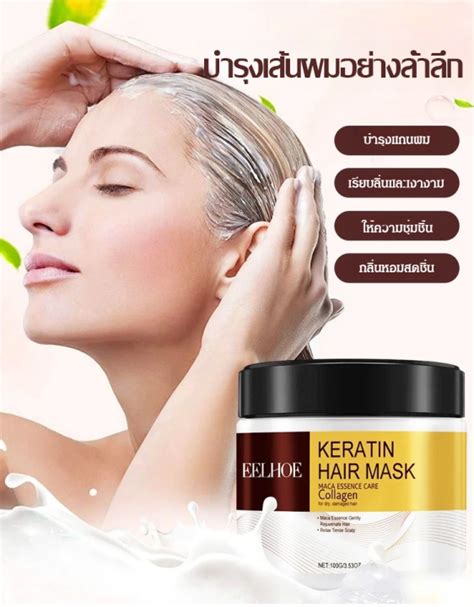Protein Treatments: The Ultimate Guide to Reviving Damaged Hair
Hair is primarily made of a protein called keratin, which is responsible for its strength and elasticity. Chemical treatments, heat styling, and environmental factors can damage the keratin, leading to weak, dry, and brittle hair. Protein treatments aim to restore the lost protein, repair the damage, and improve the overall health of your hair.

Types of Protein Treatments
There are three main types of protein treatments:
-
Hair masks: These are deep conditioning treatments that are applied to the hair and left on for a period of time. They typically contain hydrolyzed proteins, which are broken down into smaller molecules that can penetrate the hair shaft more easily.
-
Leave-in conditioners: These are lightweight conditioners that are applied to the hair after washing and left in. They contain smaller protein molecules that can penetrate the hair shaft without weighing it down.
-
Hot oil treatments: These treatments involve applying a heated oil to the hair. The heat helps to open up the hair cuticles and allows the protein to penetrate more deeply.
How Protein Treatments Work
Protein treatments work by filling in the damaged areas of the hair shaft. This helps to strengthen the hair, improve its elasticity, and reduce breakage. Protein treatments can also help to smooth the hair cuticle, which makes the hair appear shinier and healthier.
Benefits of Protein Treatments
Protein treatments offer a number of benefits for damaged hair, including:
-
Strengthening the hair: Protein treatments can help to strengthen weak and damaged hair. This can reduce breakage and improve the overall health of your hair.
-
Improving elasticity: Protein treatments can help to improve the elasticity of your hair. This makes it less likely to break when you brush or style it.
-
Smoothing the hair cuticle: Protein treatments can help to smooth the hair cuticle. This makes the hair appear shinier and healthier.
-
Reducing frizz: Protein treatments can help to reduce frizz. This is because the protein molecules fill in the damaged areas of the hair shaft, which prevents the hair from absorbing moisture from the air.
How to Choose the Right Protein Treatment
There are a number of different protein treatments available on the market. When choosing a treatment, it is important to consider your hair type and the level of damage.
-
If you have fine or damaged hair, choose a lightweight protein treatment that will not weigh your hair down.
Protein Treatment
Benefits
Hydrolyzed Keratin Mask
Strengthens hair, improves elasticity, reduces frizz
Leave-in Conditioner with Keratin
Strengthens hair, protects from heat damage
Hot Oil Treatment with Coconut Oil
Nourishes hair, reduces breakage
-
If you have thick or coarse hair, choose a stronger protein treatment that will be able to penetrate the hair shaft more deeply.
Protein Treatment
Benefits
Keratin Smoothing Treatment
Repairs damaged hair, reduces curls, improves shine
Protein Pack with Egg Whites
Strengthens hair, promotes growth, reduces split ends
Hot Oil Treatment with Argan Oil
Nourishes hair, protects from heat damage, adds shine
How to Apply a Protein Treatment
-
Wash your hair with a clarifying shampoo. This will remove any dirt or buildup that could prevent the protein treatment from penetrating the hair shaft.
-
Apply the protein treatment to your hair. Follow the directions on the package. Some treatments can be applied to dry hair, while others need to be applied to wet hair.
-
Leave the treatment on for the recommended amount of time. This will usually be between 15 and 30 minutes.
-
Rinse your hair thoroughly. Use cool water to close the hair cuticles and seal in the protein.
-
Style your hair as usual.
How Often Should You Use a Protein Treatment?
The frequency with which you use a protein treatment will depend on the condition of your hair. If your hair is severely damaged, you may need to use a treatment once a week. If your hair is only mildly damaged, you may only need to use a treatment once a month.
Things to Keep in Mind
- Protein treatments can be drying. It is important to use a moisturizing conditioner after using a protein treatment.
- Protein treatments can build up on your hair. If you use too many protein treatments, your hair can become dry, brittle, and prone to breakage.
- Protein treatments are not for everyone. If you have very fine or thin hair, protein treatments may weigh your hair down.
Conclusion
Protein treatments can be a great way to restore damaged hair and improve its overall health. By choosing the right treatment and using it according to the directions, you can enjoy stronger, healthier, and more beautiful hair.
Frequently Asked Questions
Q: How often can I use a protein treatment?
A: The frequency with which you use a protein treatment will depend on the condition of your hair. If your hair is severely damaged, you may need to use a treatment once a week. If your hair is only mildly damaged, you may only need to use a treatment once a month.
Q: Can I use a protein treatment on color-treated hair?
A: Yes, you can use a protein treatment on color-treated hair. However, it is important to use a gentle treatment that will not damage the color.
Q: Can I use a protein treatment on dry hair?
A: Yes, you can use a protein treatment on dry hair. However, it is important to use a moisturizing conditioner after using a protein treatment.
Q: Can I use a protein treatment on fine or thin hair?
A: Yes, you can use a protein treatment on fine or thin hair. However, it is important to choose a lightweight treatment that will not weigh your hair down.
